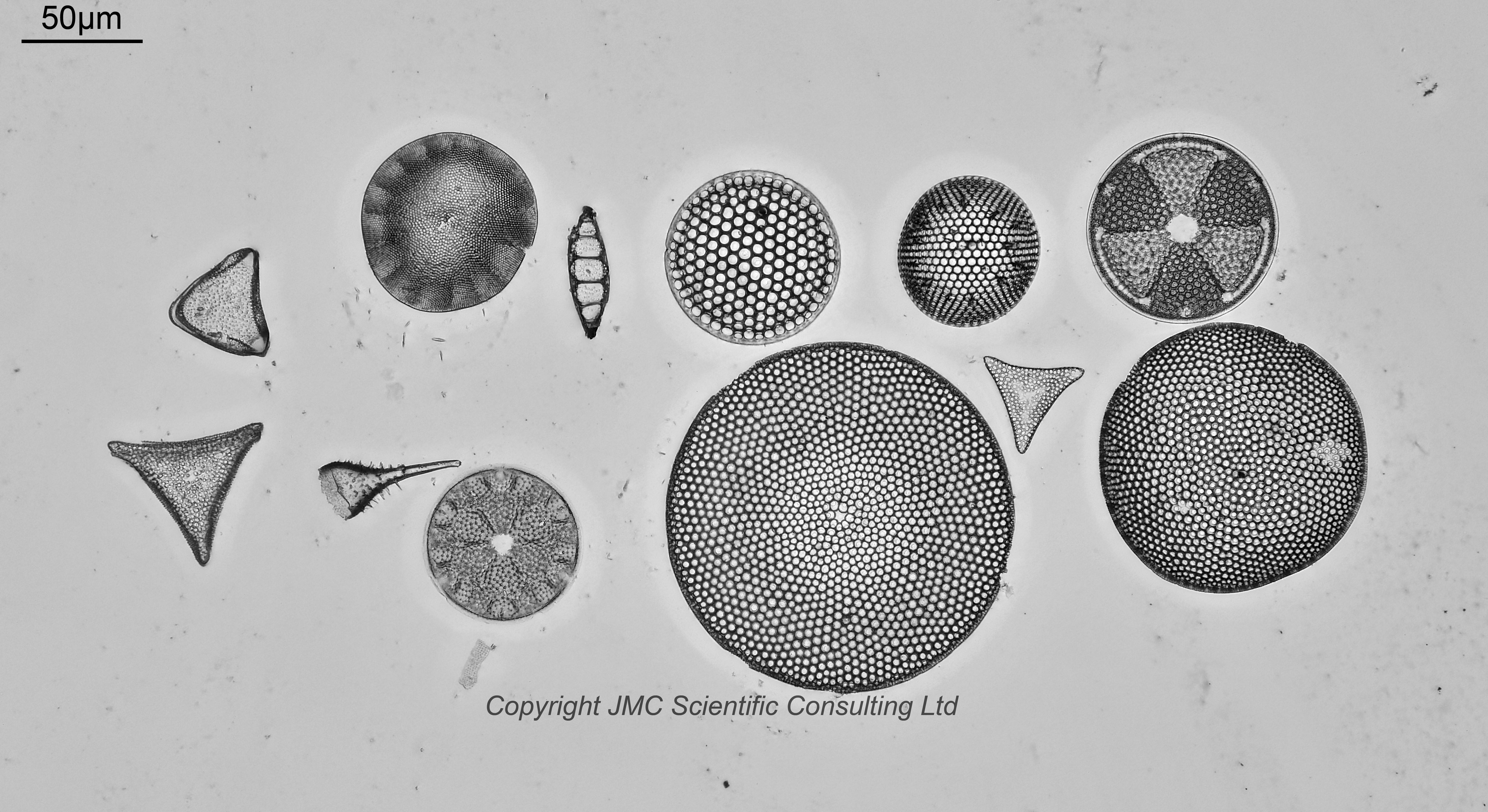


An unassuming slide simply labelled ‘Cretaceous forms, 12 spp.’. Prepared by Northern Biological Supplies of England. I selected the Glorioptychus callidus (2nd row, 3rd one along from the left) for imaging at higher resolution, as this was a really nice surprise to find on the slide. Olympus BHB microscope using 450nm LED light. 63x Leitz Pl Apo 1.4 objective, oil immersion. Olympus Aplanat Achromat condenser, oil immersion, slightly oblique lighting. 2.5x Nikon CF PL photoeyepiece. Monochrome converted Nikon d850 camera. 30 images stacked in Zerene (Pmax).
I did make an attempt at naming the rest of them;
Top row (left to right): Triceratium bicornigerum, Coscinodiscus steinyi, Hemiaulus polymorphus?, Stephanopyxis grunowi?, Stephanopyxis discrepans?, Actinoptychus undulatus?
Bottom row (left to right): Trinacria insipiens?, Kentrodiscus aculeatus?, Glorioptychus hanna, Coscinodiscus morenoensis?, Trinacria insipiens? , Coscinodiscus morenoensis?
These names have mainly from Dallas Hanna, G, Cretaceous Diatoms from California. Occasional Papers of the California Academy of Sciences, 1927, and have a good few question marks about some of my IDs.